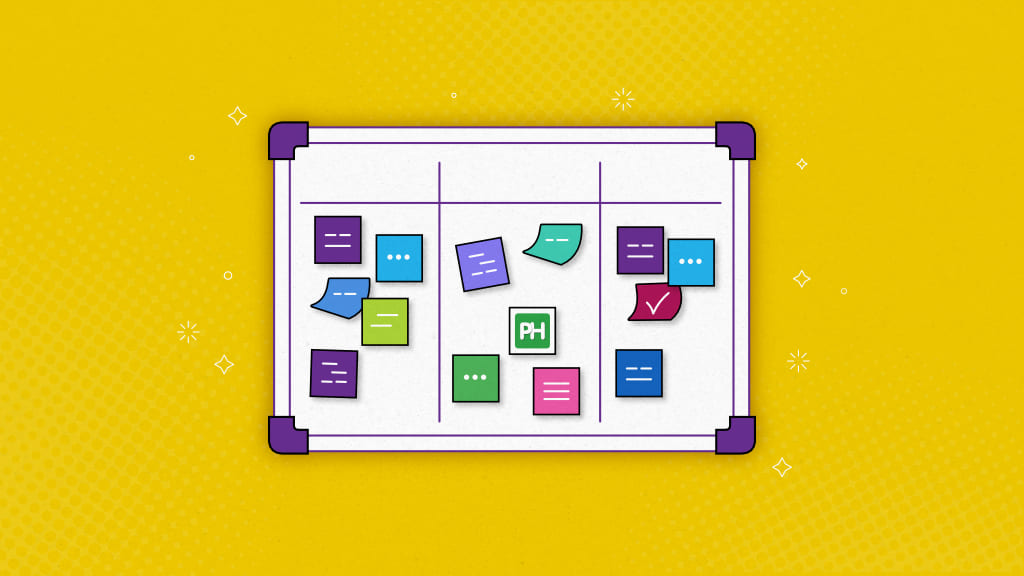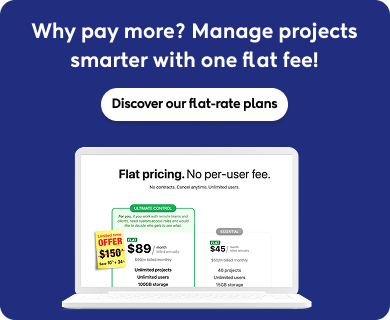If you’re in the world of designing or project management, you’ve probably heard the term “Kanban” being tossed about.
Designers have to overcome a slew of productivity hurdles on a daily basis. Years back, I was fascinated by how designers, worked—missing design assets to frequent distractions, repetitive processes, and more.
They had clients asking for repetitive reviews and changes. Since then, I wanted the system to be more organized, to work smarter, and be more productive.
Below, you’ll know what worked best for me.
This is actually quite common—being a part of a project that takes forever to move to the next step. Luckily, there is a Kanban.
Kanban board is a component of the Kanban technique. Modern Kanban boards help teams visualize tasks, see who’s working on what and where the work stands in a workflow in the form of boards.
The workflow, in that case, is defined and one has to follow the same.
So where does the Kanban method fit in? In this article, you’ll have an overview of the Kanban principle and Kanban board examples to know how your workflow can be managed on Kanban.
Firstly, let’s explain Kanban principles. The Kanban system is a method that enables an organization to visualize its working processes and encourages a collaborative culture.
It originated from Toyota’s Production System which was developed in the 1950s. The name is derived from two words “kan” which means visualization and “ban” which is a card or sign.
No matter whether you work in marketing, design, or development, you’ll have to collaborate with people. This can be a challenge because it’s hard to have a common understanding and to successfully communicate your ideas.
What’s in it for me? Why do you need a Kanban board?
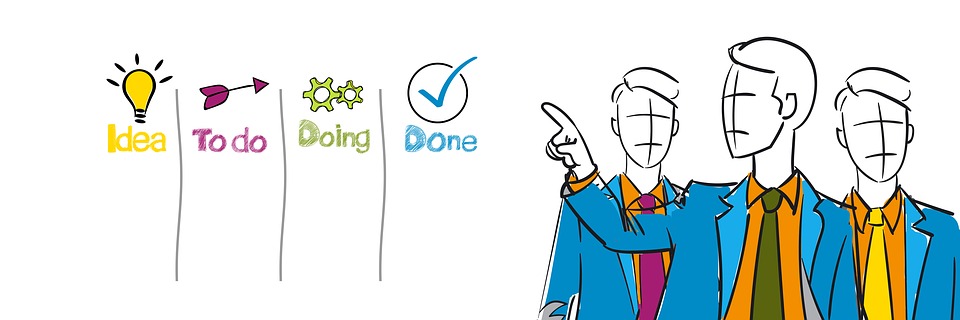
When you have to shift through stacked email threads for design approvals, collaborating within the team becomes tough.
Therefore, Kanban is meant to cut the amount of time spent on managing projects because any professional should spend their time doing their work and not managing.
- The Kanban boards help you visualize the actual workflow or system already in place.
- It balances the work and workflow.
- Kanban encourages leadership roles at all levels.
Depending on your type of project, divide the workflow into stages. Move each task from its ideation phase to the final product.
For example, for creating a good website design, a design group will divide the board into three parts: to-do, production, and completed, where:
- To-do is the default position of all the tasks available;
- Production or in progress is where you prioritize tasks that are being worked on;
- Completed or finished is where you move your tasks when they are finished.
These workflows will be connected to your overall design process involving all team members in the Kanban board. But how do you apply it to your designs?
For this, you’ll need tools. And ProofHub is one of the commonly used tools to implement the Kanban method. You get a roadmap for your project to track each task’s deadline.
Is your workflow cluttered? Try Kanban Boards on ProofHub.
(No credit card required)
Kanban Boards Examples
The basic structure of the Kanban board online has three columns: to-do, in-progress, and done.
Each column represents the stage of development from the beginning when ideas are created, to the work in progress, and then finally, to when the work has been completed.
Kanban Boards for Development Team
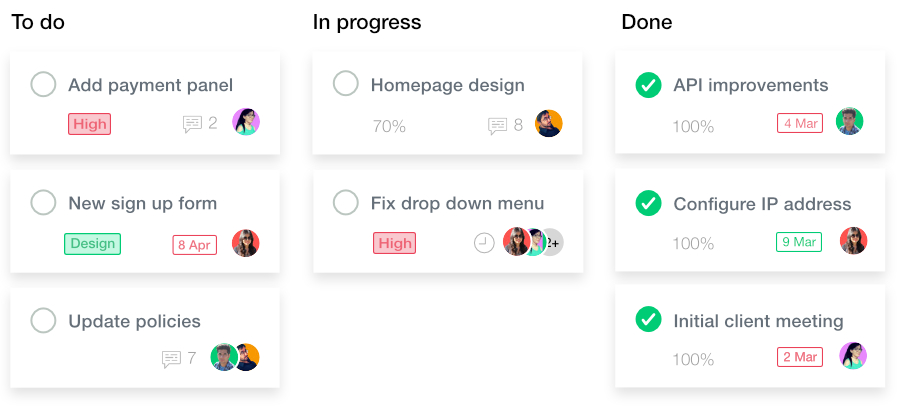
The main goal is to fix bugs, updating features, designing the homepage and resolve issues.
Agile software development teams today are able to leverage these same JIT principles by matching the amount of work in progress (WIP) to the team’s capacity.
Kanban makes it possible to have more flexible planning options, faster output, and transparency throughout the development cycle.
Kanban Boards for Marketing Team
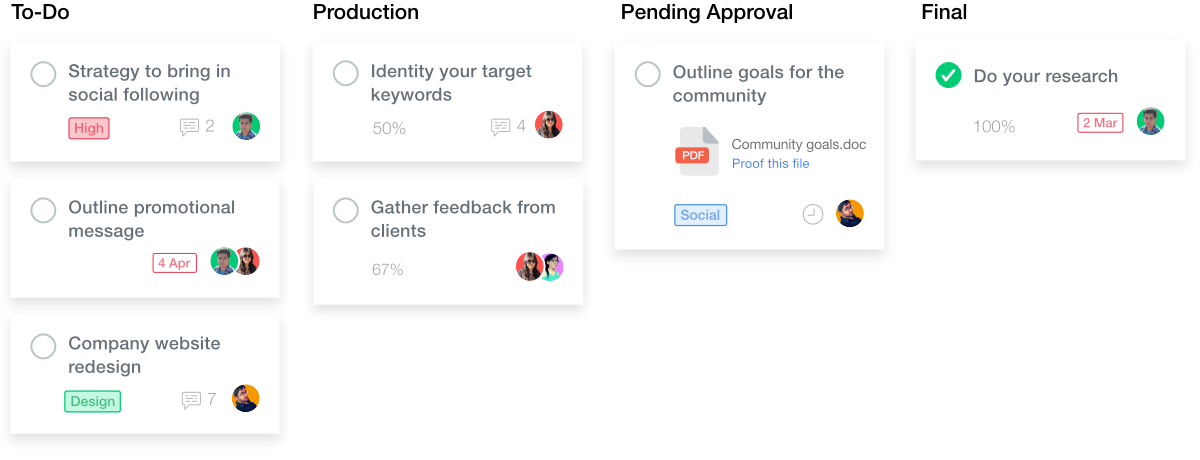
If you’re part of the marketing team, then there are chances that you’ll be facing challenges like deadlines and delivering urgent tasks on a regular basis.
Simply break down your marketing campaign on a visual Kanban board. This will give you a dedicated path to keep track of the way your team performs.
Recommended:Kanban vs Scrum: Which One Is the Better Approach to Use in 2025?
Kanban Boards for Support Team
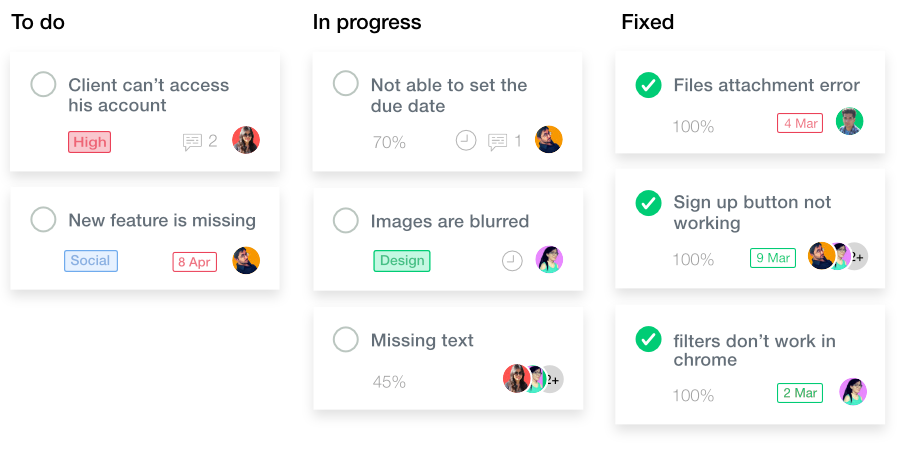
The main goal is to provide answers and solutions to the client’s questions and issues.
In the Kanban board example for the support team, the team can add tasks that need to be solved, add a ticket with details, and attach files like emails or screenshots.
The team can also communicate in the comments section to fix the issues. As soon as the front-end developer fixes the issue, he/she will then move it to “Done”.
Kanban Boards for Design Team
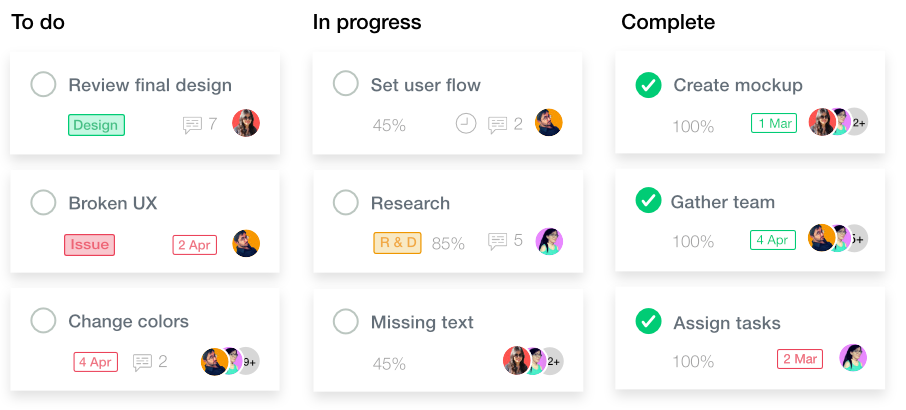
Designers have to create interfaces and experiences for products that will amaze customers.
Designers, in general, love visuals. Depending on your type of project, define your workflow.
Involve the rest of the team and developers to know what you’re doing with the design of the product.
Kanban Board for Personal Use
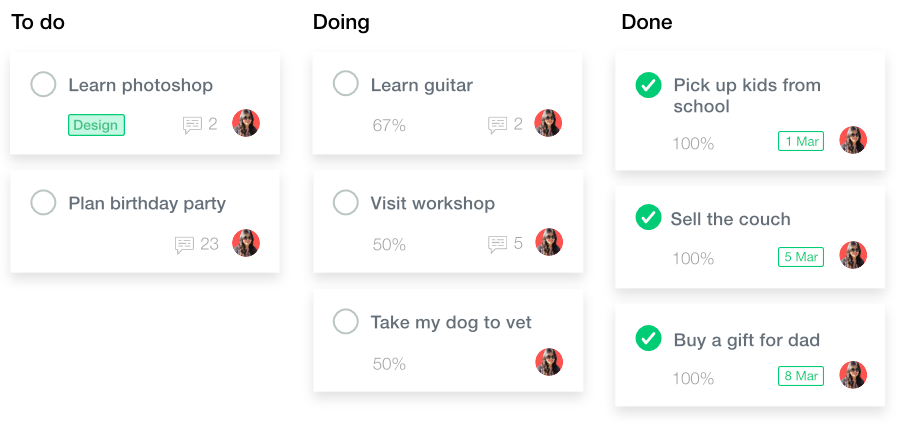
Plan and organize your daily tasks on Kanban or use it for your freelancing work.
Kanban boards are not just for professional teams but for your daily tasks as well. You can design a personal Kanban board if you want to organize your daily chores and activities.
If you identify any challenges throughout your workflow, you should try Kanban project management. At ProofHub, we can make it easy and quick to set up and you won’t require any training.
Let’s See How Kanban Works in ProofHub
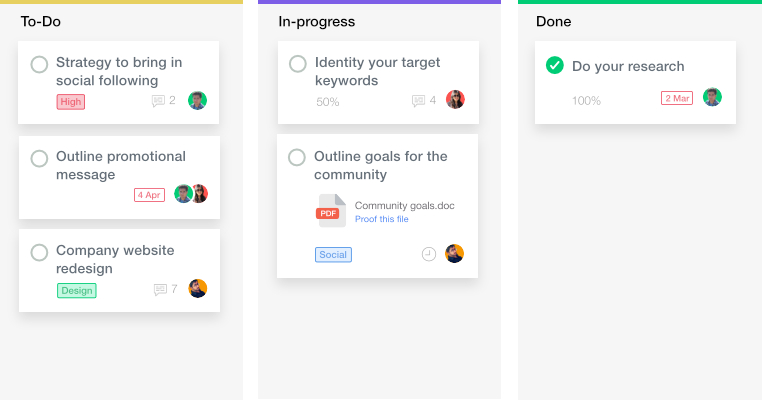
If you’re looking for a visual way to grow your team, ProofHub has Kanban project management software for you to plan, manage, streamline your processes, and delegate tasks to improve your project management workflow.
For many different teams, using ProofHub is like using the best Kanban board, because it is more like getting a lot of benefits as everything works together in one place.
- Visualize workflow: Create a visual model of your team’s workflow.
- Control work in progress: Kanban method eliminates the need for constantly re-prioritizing or rescheduling tasks.
- Custom workflows: Create custom workflows, in which you can define stages, and make your work processes more flexible. You can also choose whom to subscribe on each stage of the workflow.
- Eliminate long meetings: Keeps everyone in the loop.
- Spot bottlenecks and work blockers: Teams can spot problems that are preventing them from completing a task on time.
- Make task management easy: Add labels, attach files and documents, and track time using timers.
- Adding tasks and subtasks and assigning them: Add subtask to a task in the task list. And also add multiple assignees who will be looking after the task.
- Easy and simple filters: You get to view your tasks through the filter: incomplete/complete, all assigned/assigned to me, due today/tomorrow/this week/next week/anytime,
- Make it fun and colorful: Give a different color to each stage in your workflow.
- Import tasks: Use the sample CSV and fill your data at once.
How Does ProofHub’s Kanban Board Work?
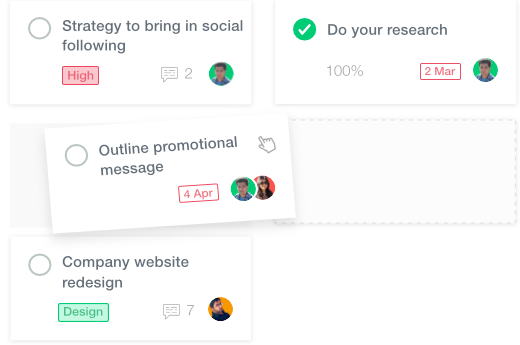
ProofHub is a task management software where you can add task lists and subscribe tasks to team members on those lists. You can also choose whom to subscribe on a particular stage.
With an online Kanban board, you will get the option to associate a workflow with this list as well.
This will mean that you will be able to get a visual representation of the tasks placed in columns, where each column will represent a particular stage of the workflow.
And you progress on the project, the task will move from one stage to the next. People assigned to the task in the next stage will now be working on the task and will be able to move it to the next column when they complete it.
Maximize your team’s efficiency with ProofHub’s Kanban Boards.
(No credit card required)
Kanban in a Nutshell
Now is the time to move towards excellence. A Kanban system is more than sticky notes on the wall.
It’s easy to understand and Kanban examples for daily work life can make your transition to an organized one. Without being shot down, let’s move in the right direction.
Now that you’ve finished with the article, I suggest you kick off your Kanban practice with:
- A guide to understanding Kanban
- A Kanban board like ProofHub— to visualize your work and workflow
- Making a transition from Scrum to Kanban
That’s all about the Kanban board. I am sure you are going to love using it.
